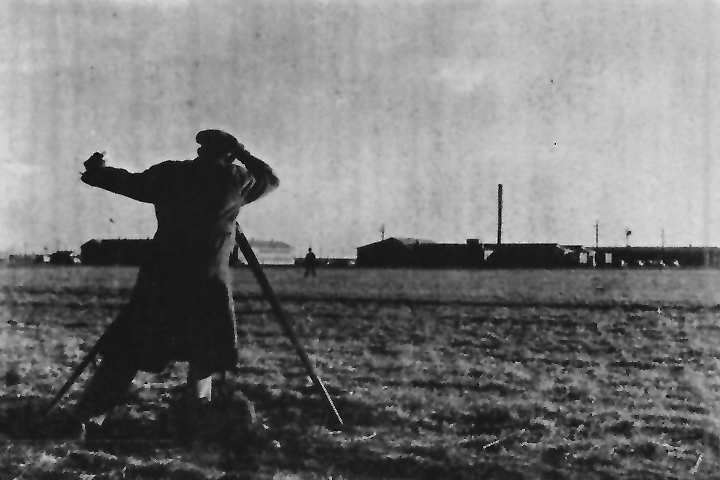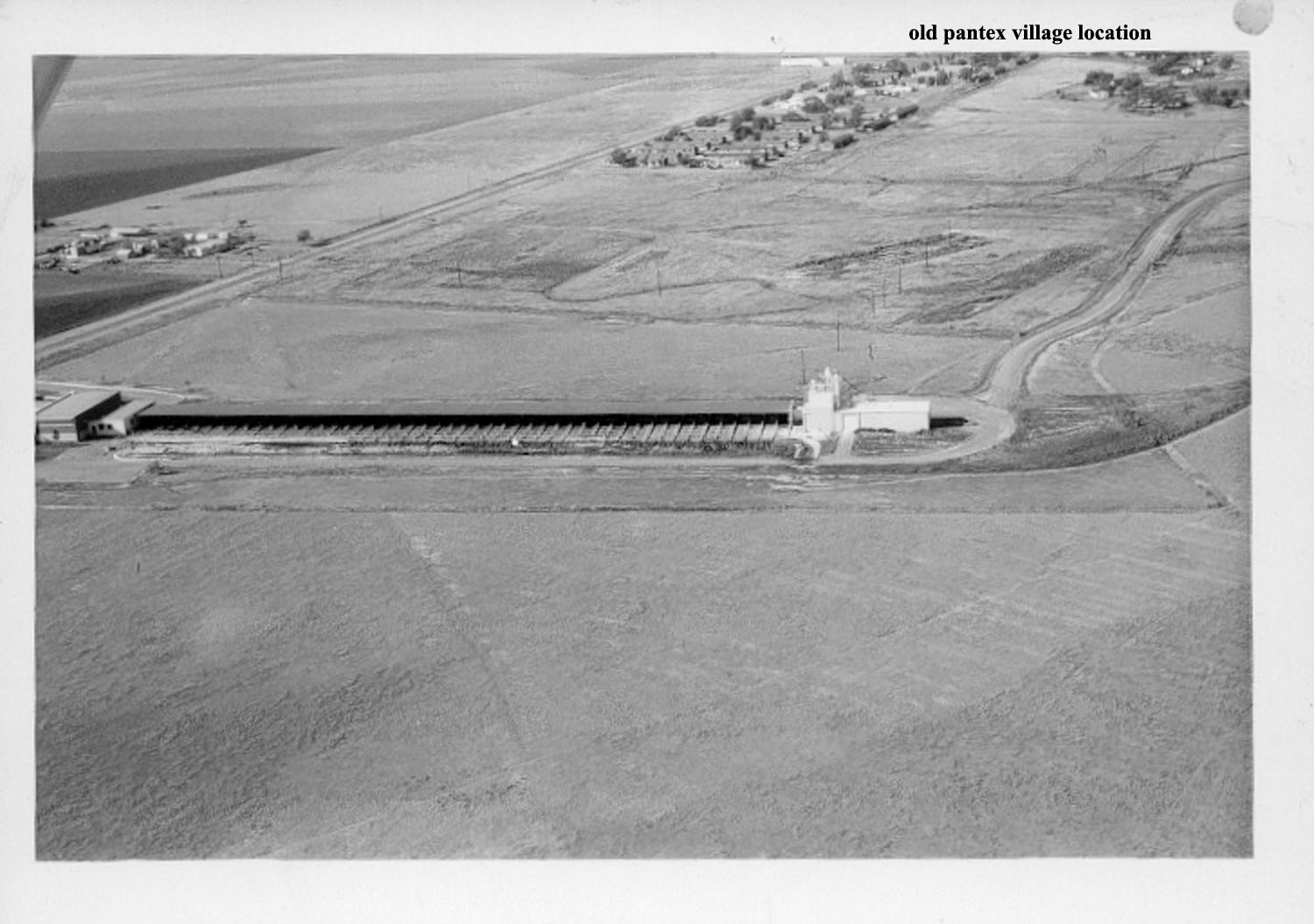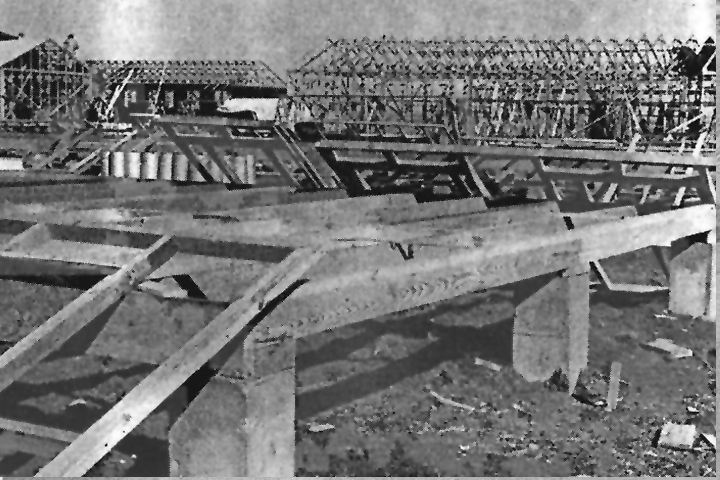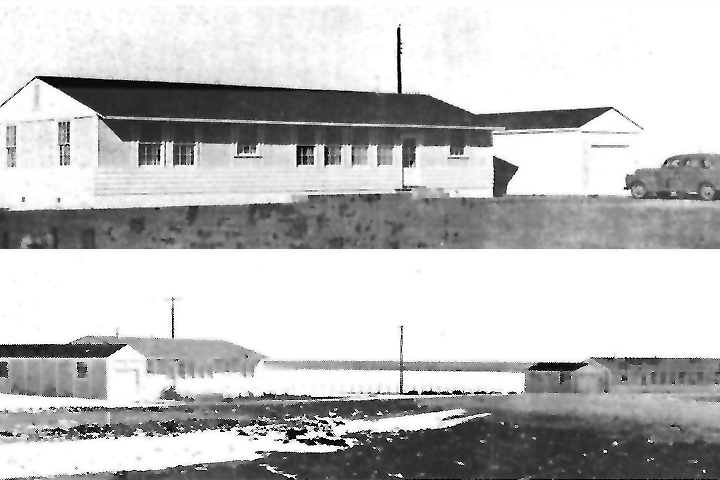Building Pantex City: A village is born
“It takes a village.”
That phrase, echoing a proverb about the emphasis on family and community in raising children, also applies to a time about 70 years ago in the heart of the Texas Panhandle.
In 1943, housing was at a premium in the Amarillo area, and with the war effort and production at Pantex already in full swing, along with a growing workforce, the need for new homes was obvious.

Engineer Ed Groman surveys the northwest boundary corner of the Pantex Housing Project in 1943.
The National Housing Administration (now, the U.S. Department of Housing and Urban Development, or HUD) approved 175 new homes for Pantex employees with three or more family members, but even that was not enough. So, an additional 360 one-, two- and three-bedroom apartments were built.
It was all part of what was then called “Pantex City,” located just north of U.S. Highway 60 and Farm-to-Market Road 683. Along with apartments and homes, the village included plans for a shopping center with a grocery store, meat market, fire station, drug store, barber shop, beauty parlor, shoe repair, and a tailor shop. There was also talk of a possible grade school with plans to bus students back to town for high school.

Site of the Pantex Village
Thanks to pre-fabricated, mass-production methods, construction was slated for completion in April 1943. Dwellings went up like Tinker Toys with each unit comprised of four to eight apartments. An additional 400 pre-fab homes were added, bringing the population of the Pantex Village up to a few thousand. The village grew to 69 residence buildings, a community center, and a store, supporting the approximately 5,325 Pantex employees working three shifts at the height of World War II.

Construction of the pre-fab housing units at the Pantex Village
Before the war’s end, the village was fairly isolated, functioning as a self-sufficient community. It was 10 miles from the town of Panhandle and accessed only through a perimeter gate, which was locked each evening. There were recreational facilities, especially for the younger set; including basketball and tennis courts along with a teen club for dances.

Housing barracks
As a village, there was also a small newspaper called the “Pantex Breeze.” There were no real village officials, as the place was run like a housing project; there was a manager but no one was ever elected as an official to preside over the village. To some outsiders, the village was known as the low-income “Cardboard Village” due to the pre-fab materials and walls so thin you could hear neighbors talking.
In 1949, the plant and village were acquired by Texas Technological College (now Texas Tech University), and by the end of that year, the village was turned over to Carson County. It was still going strong in the early 1950s with apartments ranging from $33 to $42 per month and all utilities paid. After years of rotating chaplains, the Baptist church and Church of Christ moved into permanent buildings within the village early 1950s.
In an article published in the Texas Observer magazine called “Letter from the Panhandle,” noted cowboy poet, author, and former village resident Buck Ramsey reminisced about his time at Pantex.
“On the western edge, the government constructed a village; symmetrical rows of buildings so uniform there was a nightly problem of entering the wrong apartment by mistake. The war industry, with its promise of regular paychecks and dwellings with gas heaters and indoor plumbing, lured many families from the hardscrabble countryside. Mine was among them.”
But all good things come to an end, and in 1968, Pantex Village closed due to the Amarillo Air Base being shut down the previous year and the resulting large number of vacancies caused by improved economic opportunities elsewhere.
Ads were placed throughout the Panhandle announcing that the village buildings were all to be sold at auction. Some of the smaller buildings ended up being sold and are reportedly still being used in the town of Panhandle for storage.
However, the most surprising outcome of the auction can still be found on the east side of Amarillo, on Interstate 40 at one of the city’s most heavily advertised and well-visited tourist destinations. The Big Texan Steak Ranch, famous for its “free 72-ounce steak, if eaten within an hour,” has a surprising Pantex connection.
Owner Bob Lee purchased and dismantled five barracks picked up at the auction and used the lumber to build his restaurant in 1960. Reportedly, most of that wood was lost in a fire in 1976, but the restaurant was rebuilt with the help of 100 of his employees pitching in to help out.
Just like a time more than 30 years earlier… it took a village.
